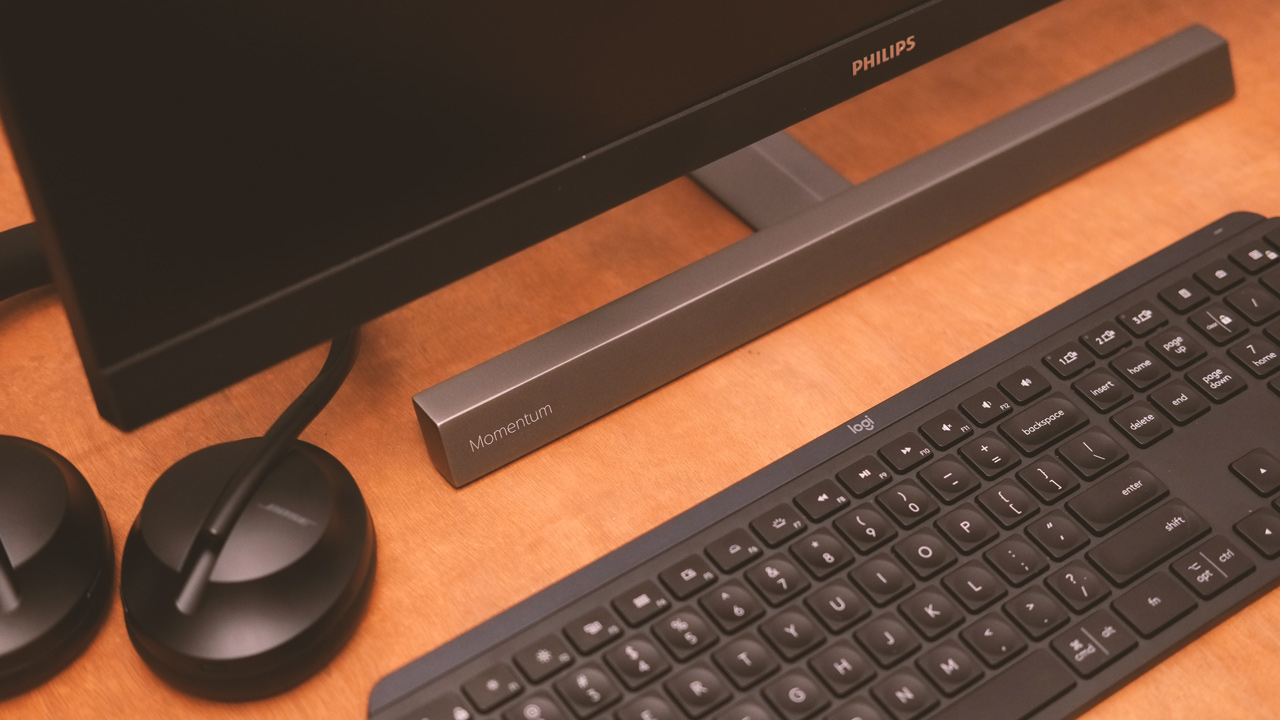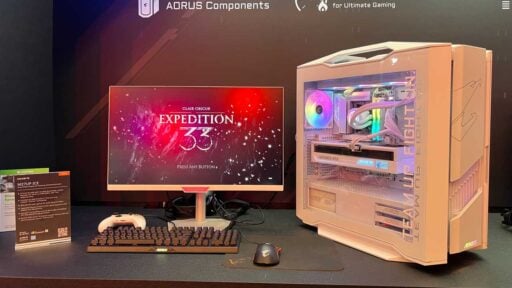So, Philips entered the gaming scene with their 272E1GSJ monitor back in 2020. Fast forward to the half of 2021, we now have the 275M1RZ in for review.
This is a rather new to me model, featuring a 27 inch 1440P panel with a refresh rate of 170Hz. Response time is at 1ms (GtG) which should mean that it is a fast IPS panel without resorting to MPRT – which is a vaguely used term today.
Now this monitor comes with dual 5W DTS speakers, USB pass-through and the Ambiglow feature that I am very much excited to check out.
Disclosure: Philips sent this unit as a return sample for the purpose of this review. The company did not ask me to say anything particular about it. All thoughts and opinion are of course my own.
- Product Page: Philips Momentum 275M1RZRL
- Price: ₱25,699 PHP (MSRP)
- Release Date: Q4 2020
Table of Contents:
- 1 Technical Specifications
- 2 Packaging and Accessories
- 3 Design, Build and Connectivity
- 4 OSD and Navigation
- 5 Physical Layout, Functionality and Ergonomics
- 6 Test Setup and Methodology
- 7 Preset Analysis:
- 8 Color Gamut
- 9 Tone Response
- 10 Brightness
- 11 Contrast Ratio
- 12 Screen Uniformity
- 13 Color Accuracy
- 14 Power Consumption
- 15 Display Lag
- 16 Motion Clarity: Pursuit Camera
- 17 Back light Bleed
- 18 Viewing Angles
- 19 Frame Skipping
- 20 Software, Lighting and Special Features
- 21 Final Thoughts
Technical Specifications
| Display | |
| LCD Size | 27″ |
| Aspect Ratio | 16:9 |
| Resolution | 2560×1440 |
| Refresh Rate | 144Hz, 170Hz via DisplayPort + Overclocking |
| Adaptive Sync | AMD FreeSync Premium |
| Pixel Density | 108.79PPI |
| Brightness | 350cd/㎡ (Typical) |
| Contrast Ratio | 1000:1 |
| Panel Type | IPS |
| Response Time | 1ms (GtG), 1ms (MPRT) |
| Color Space | NTSC 110%, sRGB 130%, Adobe RGB 110%, DCI-P3 98% |
| Color Depth | 10-bit? (8-bit + FRC) |
| Backlight | W-LED |
| Connectivity | |
| Display Options | 1x DisplayPort 1.4, 2x HDMI 2.0 |
| USB | 4x USB 3.2 (via 1x Type-B) |
| Audio | 1x 3.5mm (Audio-out) |
| Speaker | 2x 5W (DTS) |
| Ergonomics | |
| VESA Mount | 100x100mm |
| Pivot | — |
| Swivel | -35°/+35° |
| Tilt | -5°/+20° |
| Lift | 0-120mm |
| Anti-strain | Blue-light filter, Reading mode |
| Dimensions | |
| Length | 614mm |
| Width | 75mm |
| Height | 370mm |
| Weight | 3.97kg (w/o stand) |
Packaging and Accessories
The 275M1RZ comes in the usual recycled cardboard box with a sandwich style inner packaging made out of polystyrene.
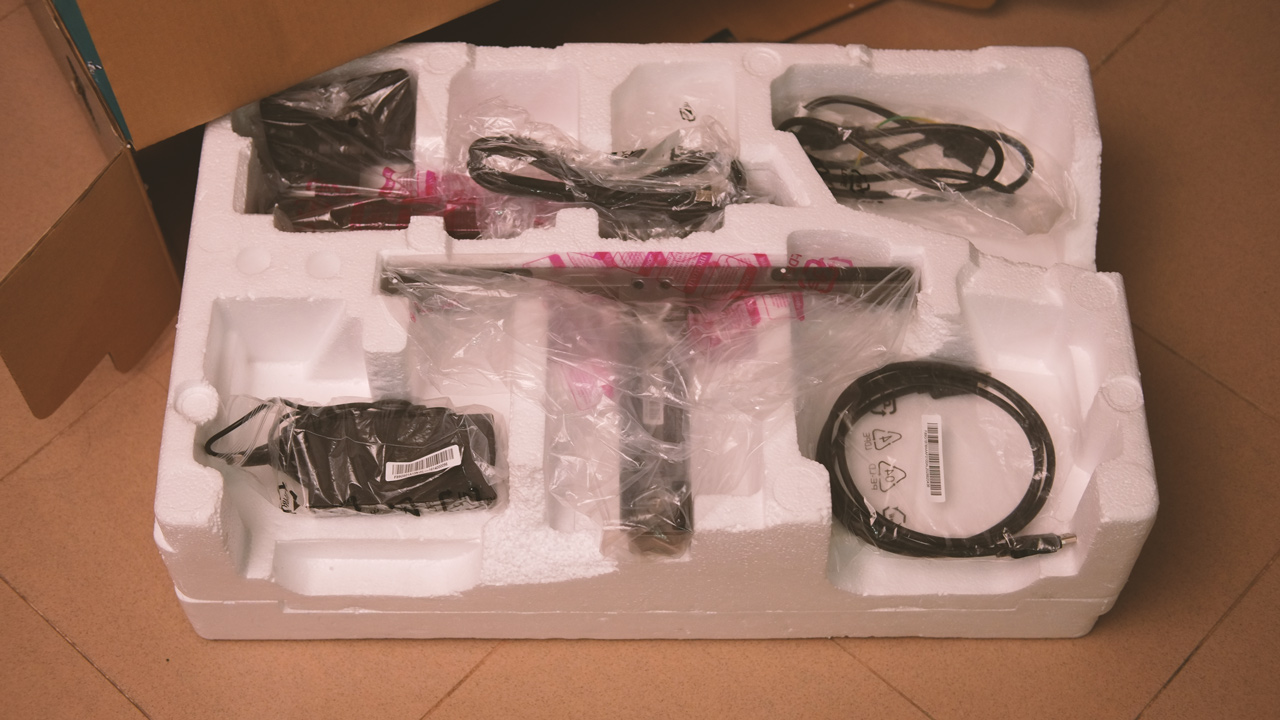
The packaging comes with the following items inside:
- Main unit
- Clip-on VESA mount
-
Aluminum base
- Power cable
- Power adapter
-
DisplayPort Cable
- HDMI cable
- USB cable
- Manual
- Software DVD
There’s supposed to be some sort of manual here or a quick start guide.
Design, Build and Connectivity
Philips’ design philosophy with the 275M1RZ revolves around simplicity and functionality with a dash of elegance. Certainly a far cry from the usual edgy gaming monitors we used to see from the other brands.
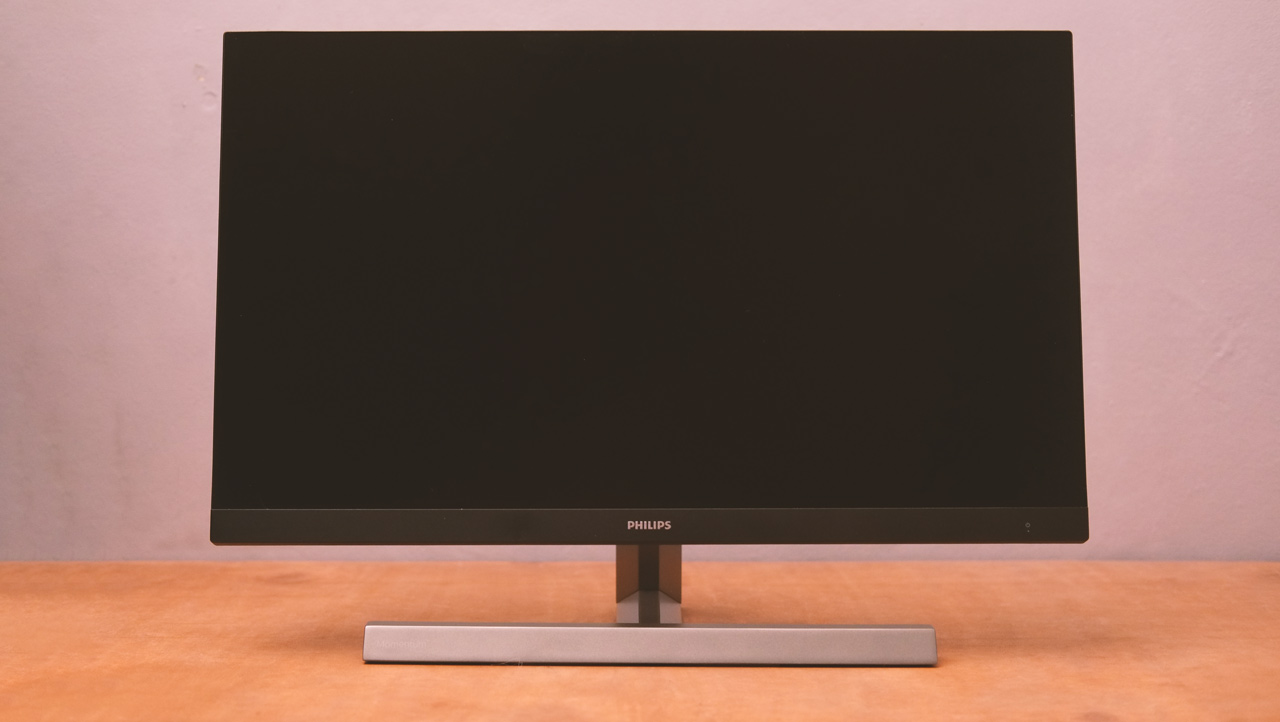
Back panel is plain simple – with the exception of the SMD LEDs mounted at the edges of the panel for the ambient lighting feature, Ambiglow. At the back, we also got a cable clamp to minimize clutter.
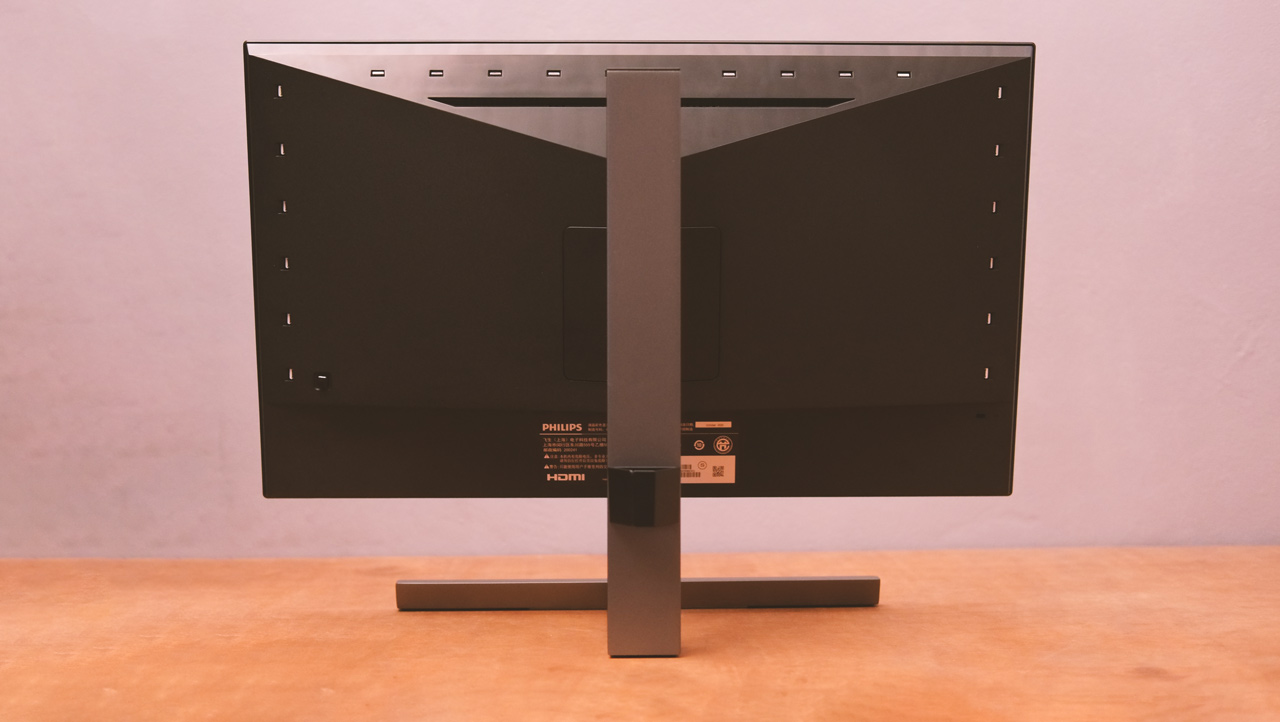
Connectivity options are fleshed out. We have dual HDMI here along with a single DisplayPort for display while we have quad USB ports for peripherals and storage devices. An audio out is also provided here for headphones. Note: Yellow ports are for fast charging. Not sure about the maximum wattage here though.
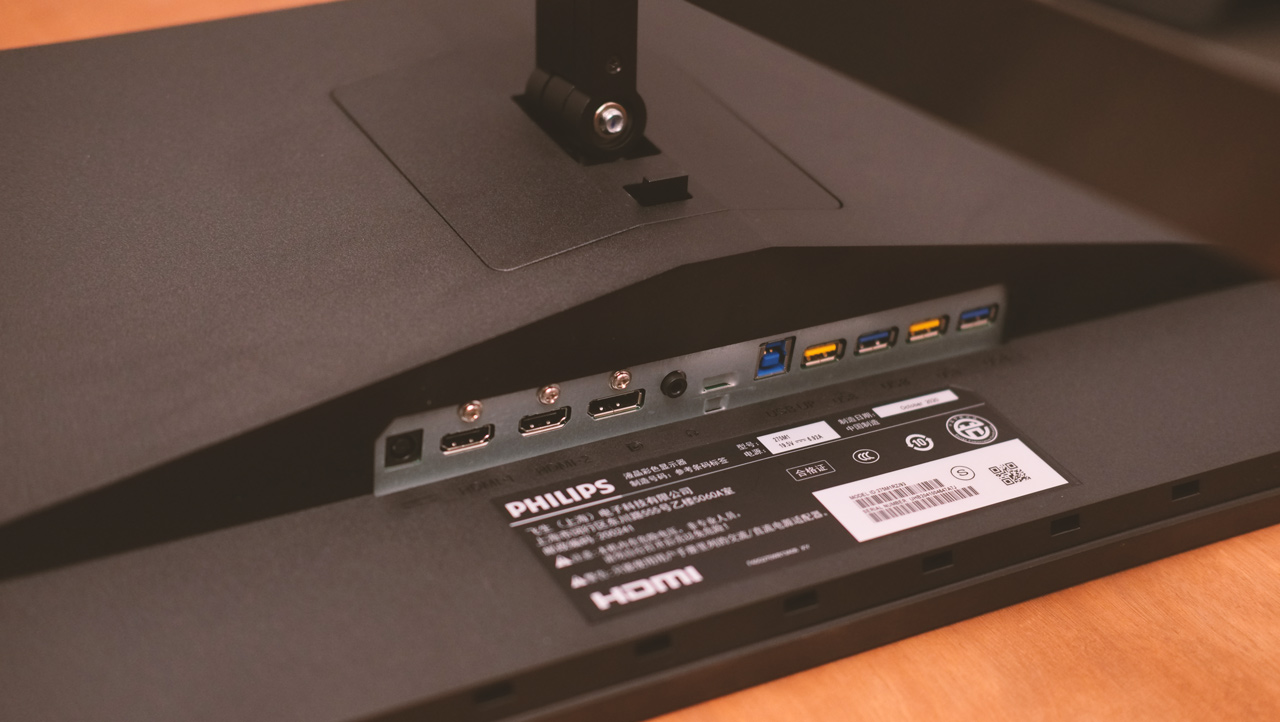
While the display comes with an external power supply, I like that Philips went with DTS certified 5W stereo speakers. More about this later but notice that recessed insert for VESA mounts. Make sure to get a compact 100×100 one or better yet, if you’re planning on mounting this to a 3rd party one, make sure it comes with a spacer.
Philips went with a joystick for the OSD navigation though it doesn’t work like your usual joystick – mainly due to the OSD navigation’s nature. Pressing it (hold) turn the display on and off and with that said, cancelling and confirming an action requires you to move it left and right respectively over the norm.

Now the OSD itself comes with 11 menus. Ambiglow takes the first slot here with customizable positions, brightness output and modes.
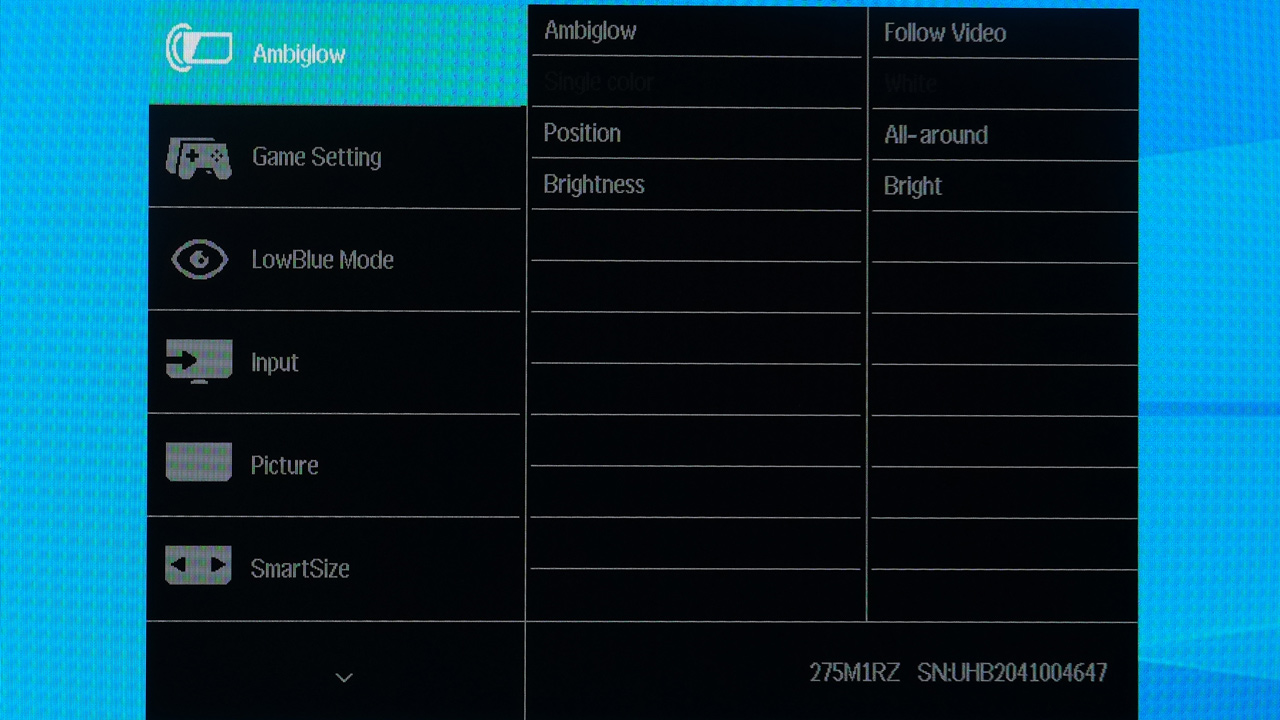
Game settings comes next. This is self explanatory but one thing you have to note here is to never turn off the Low Input Lag mode. It has the most impact on latency over the other options and I don’t see any reason to disable it.
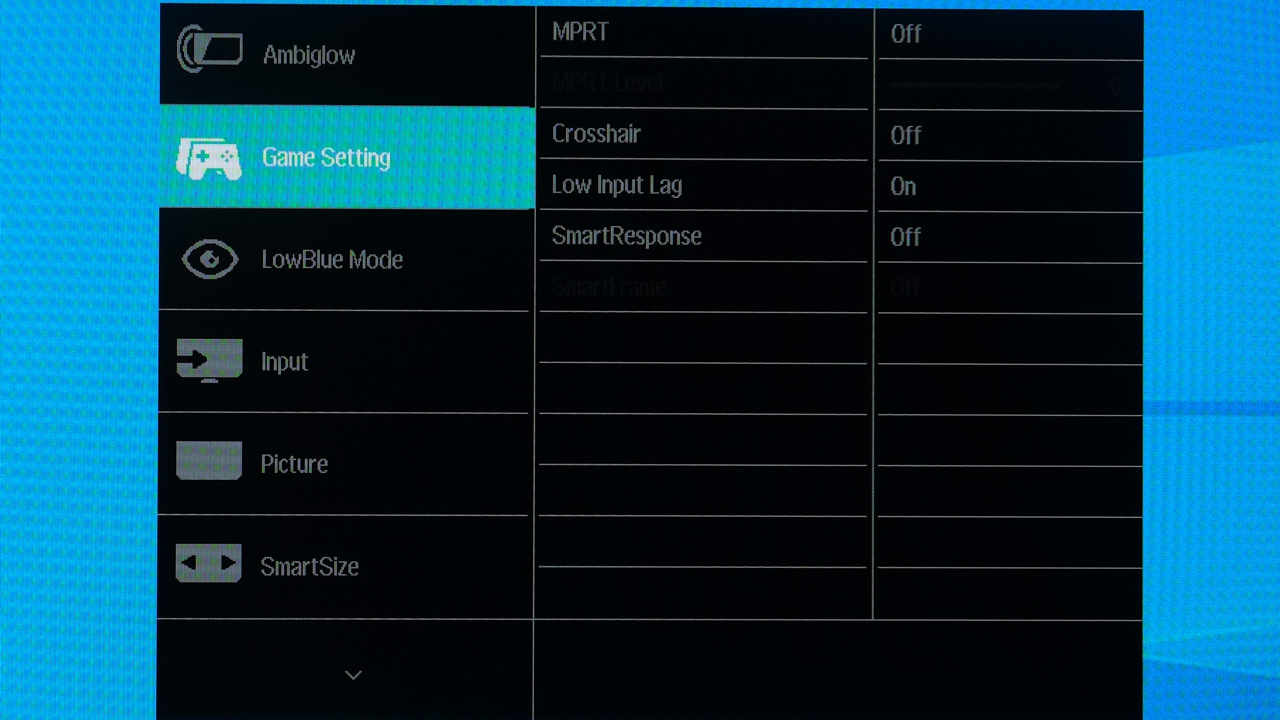
Picture is where you could access the luminance related options – that includes gamma correction. Pixel orbiting, which is an anti-burn-in feature is also present here.
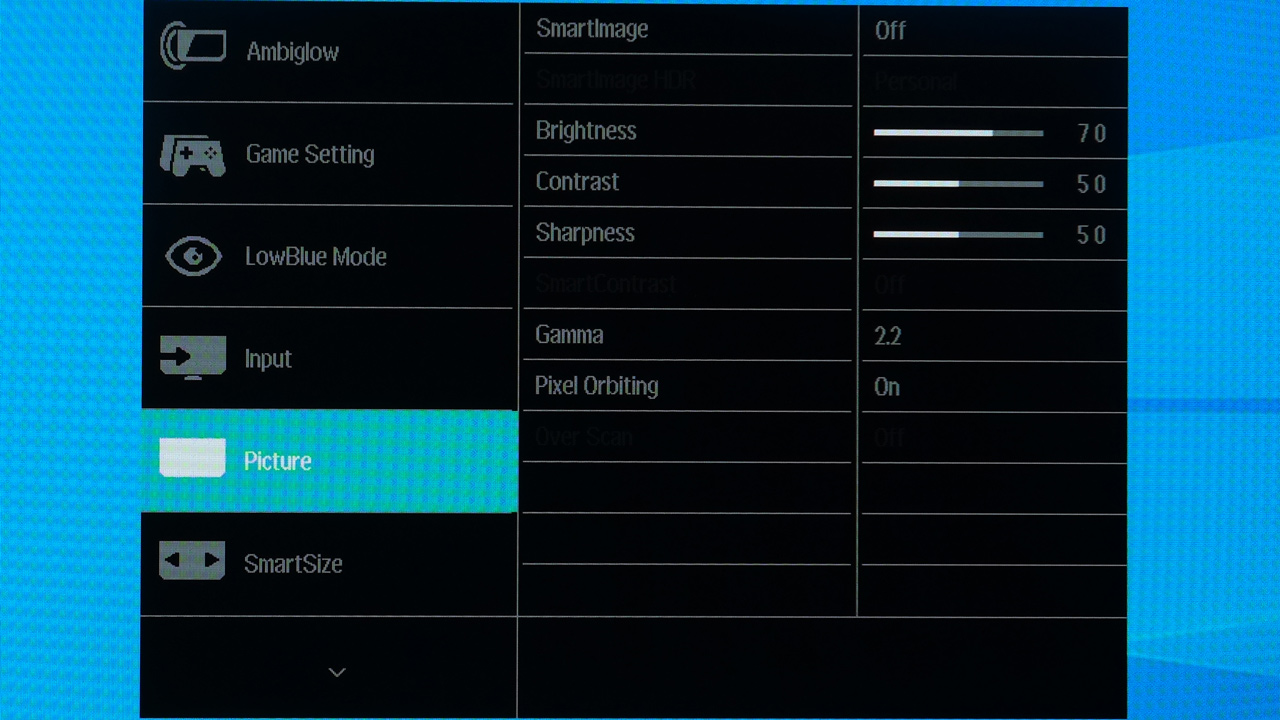
Audio got its own section here too which is just proper for its DTS capable 5W stereo speakers. There are DTS modes to choose from here with of course the dreaded TruVolume option in tow. For those of you who do not know this, TruVolume sucks the life out of dynamic range via compression.
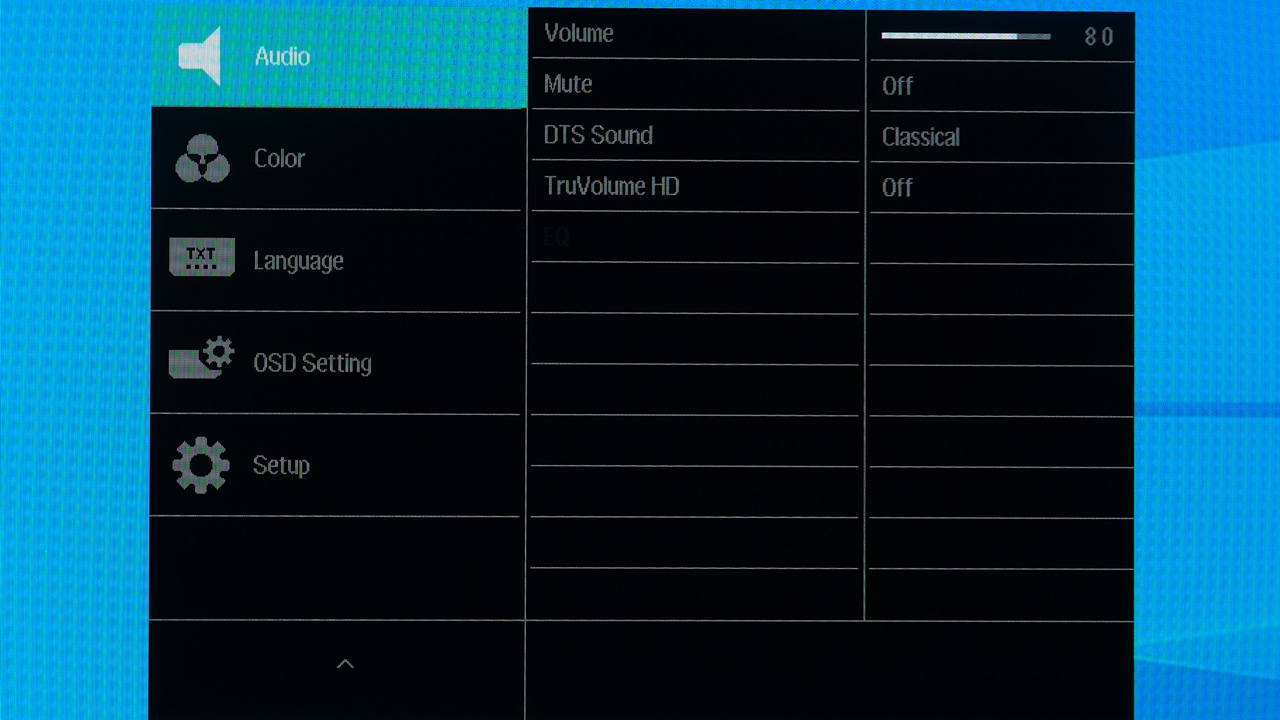
Color is another menu worth looking into to make sure the panel’s color temperature conforms to a desired standard.
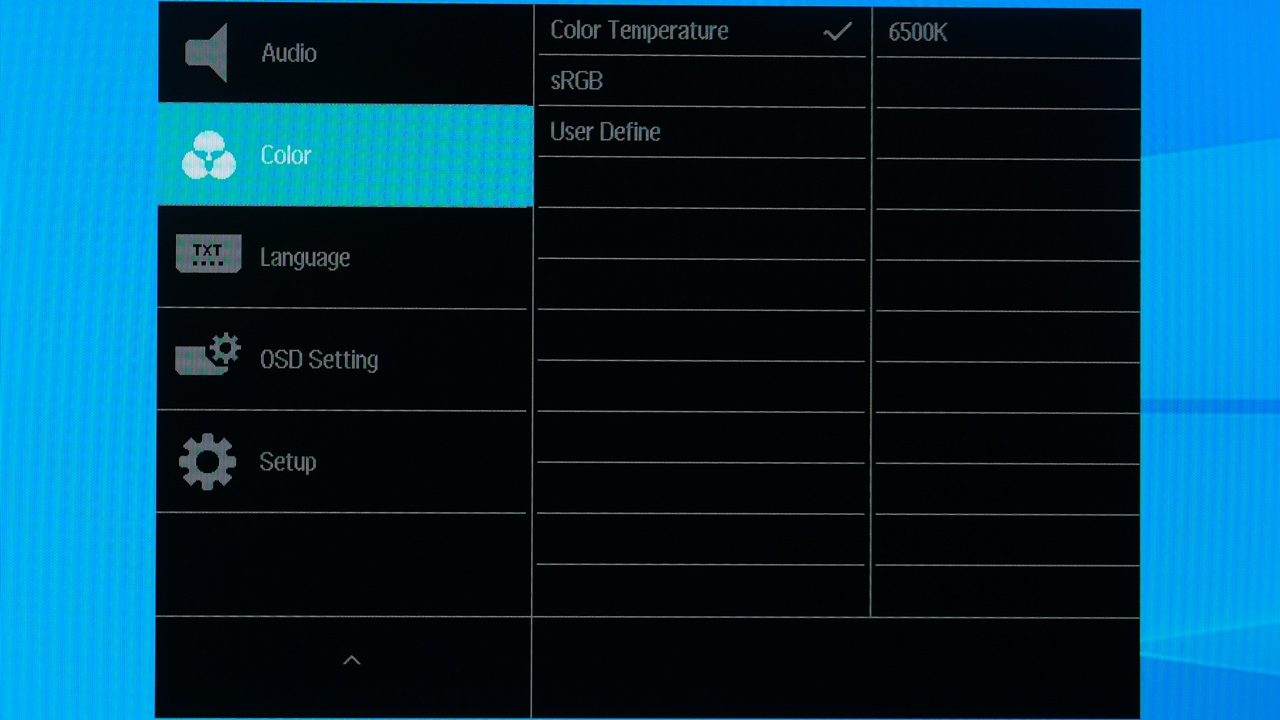
Overall pretty nice OSD we got here. Tons of options to play with along with excellent presets for each. I really dig that we got a functional gamma correction plus color temperature presets here over the most common settings.
Physical Layout, Functionality and Ergonomics
The Philips Momentum 275M1RZ is a 27″ 1440P display, which puts it at my desired PPI level for the standard desk space. Philips used an anti-glare coating for this particular display. A common feature found on most gaming panels. Now while it is stackable via the use of VESA mounts, the lower part of the display is significantly thicker compared to the rest – which is borderless.
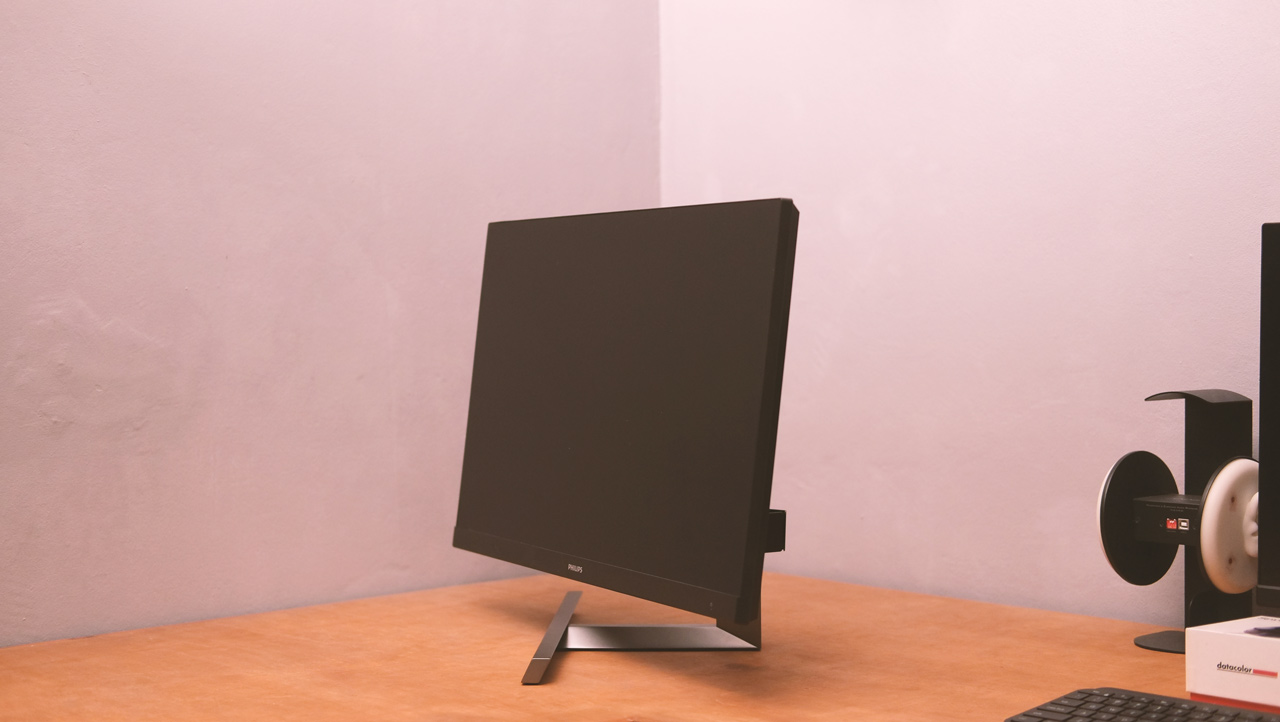
This monitor supports a decent amount of mechanical ergonomic features via its default stand mount with the exception of a pivot mechanism. Nothing fancy but I am really digging that standard aluminum mount.
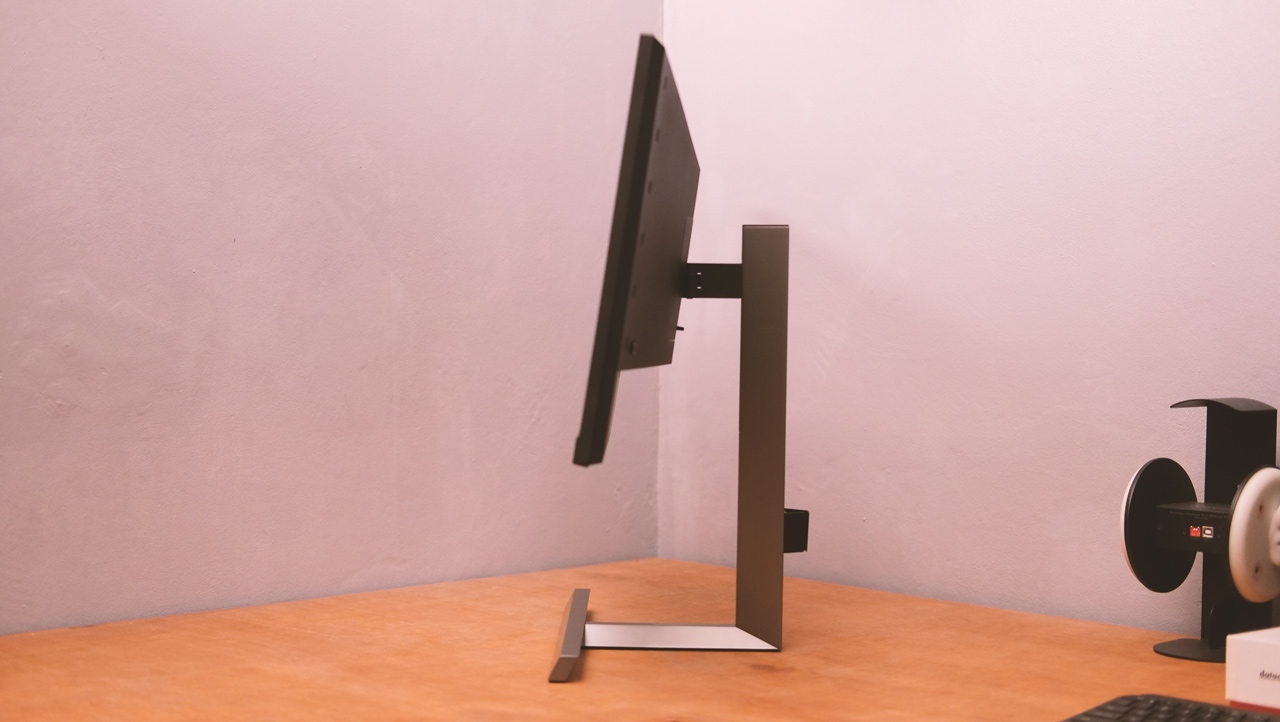
Aside from these ergonomic features, the monitor also comes with a reading mode – that will automatically enable LowBlue Mode from the OSD.
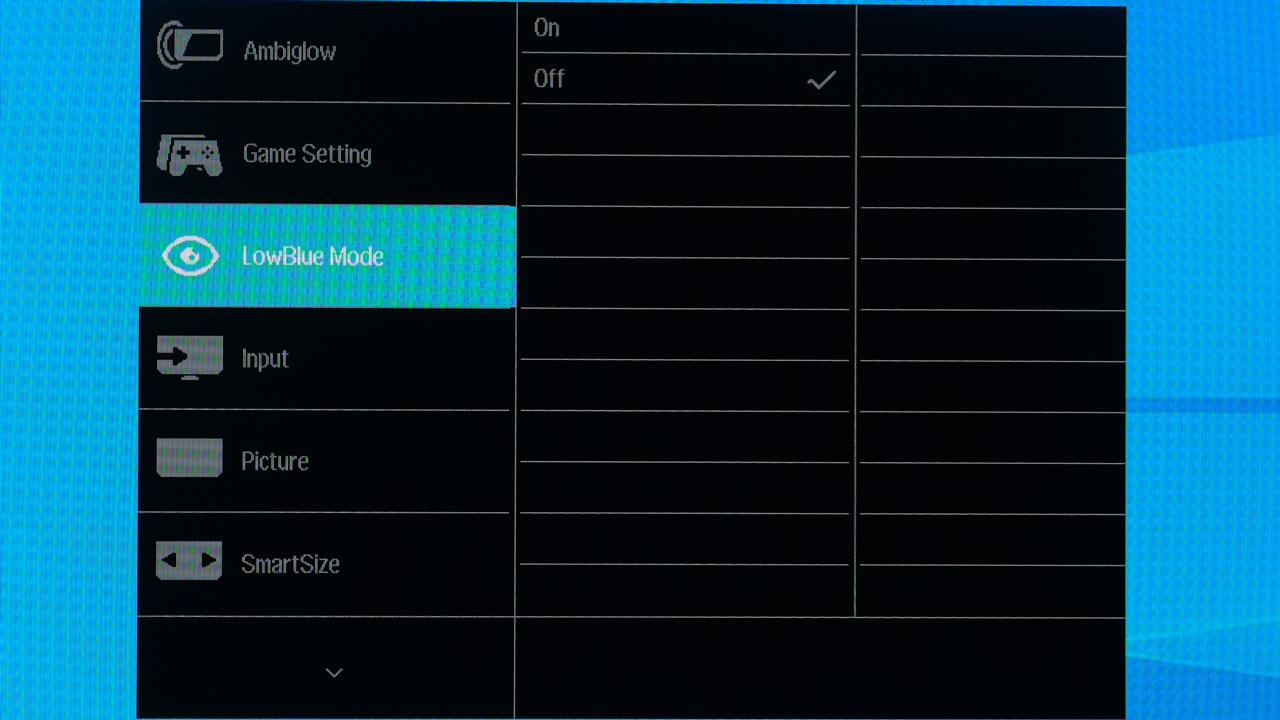
Now as for readability, I do not see any red flags here with BoW and WoB texts – unless pixel orbiting kicks in. Both the low blue light mode and the excellent readability should help aid long term comfort and or ergo.
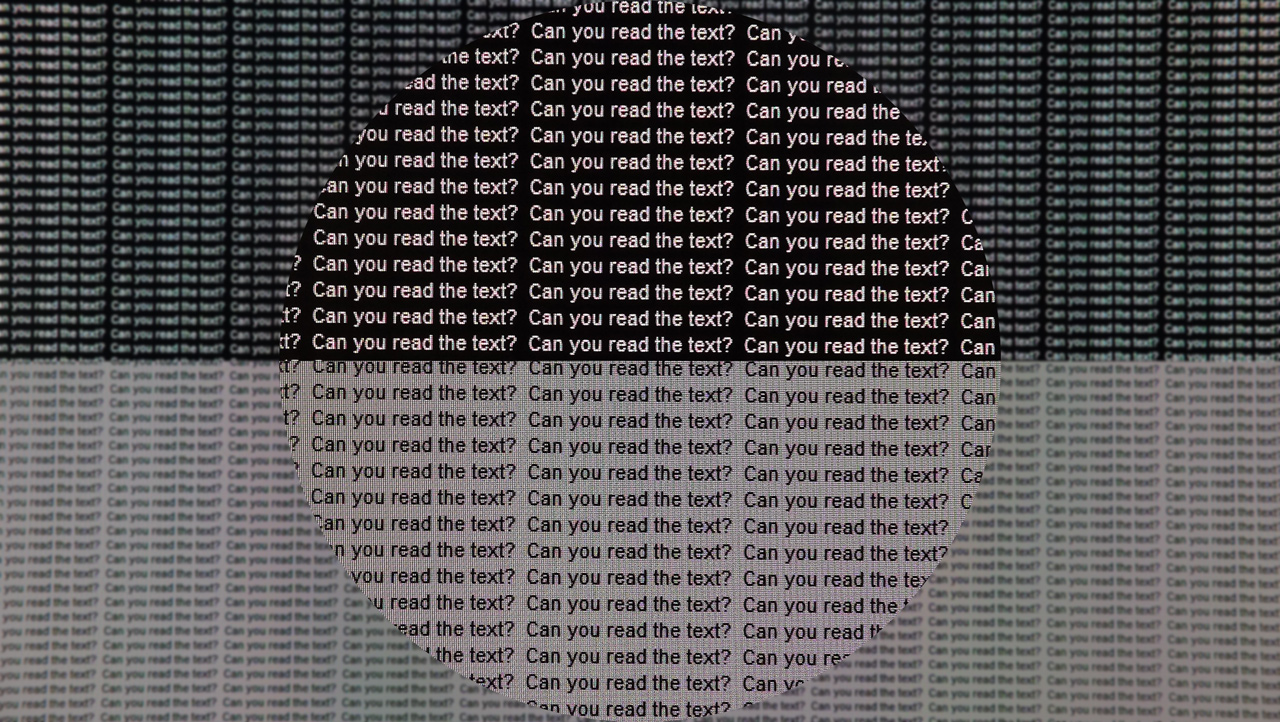
Test Setup and Methodology
Our test setup relies on the Blur Busters TestUFO Motion Tests and the Data Color Spyder5ELITE Display Calibration System. The camera used throughout the review is the Fujifilm XE-1. Latency on the other hand is tested with Time Sleuth.
| Default Test System Specifications | |
| CPU | AMD Ryzen 5 3600 |
| Motherboard | ASUS ROG STRIX B550-I Gaming |
| Cooler | Noctua NH-U12S Redux |
| Memory | ADATA Premier 2666MHz 16GB |
| GPU | ASUS Phoenix GTX 1660 SUPER 6GB |
| Storage | Plextor M9PE NVME 512GB |
| Case | Mechanical Library JXK-K3 |
| PSU | Thermaltake Toughpower GF1 650W |
| Display | LG UF680T |
| OS | Microsoft Windows 10 Pro 64-bit |
Target for calibration is a 2.2 Gamma value, with a White Point at 6500K and a Brightness value set at 120 cd/m2. Calibrated values are then analyzed with the Spyder5ELITE Display Analysis tool. The following OSD values are selected for the display calibration.
| OSD Settings | |
| Brightness | 18 |
| Contrast | 50 |
| Saturation | 50 |
| Temperature | 6500K |
| Gamma | 2.2 |
| Preset | Off |
If you wish to use the calibrated ICC profile taken from our Spyder5ELITE result, just send us a message. You may also read our guide on how to use ICC profiles.
Preset Analysis:
To start, the monitor is tested to check out the brightness, contrast and white point at different presets. This is to check what could be the nearest to our target for calibration.
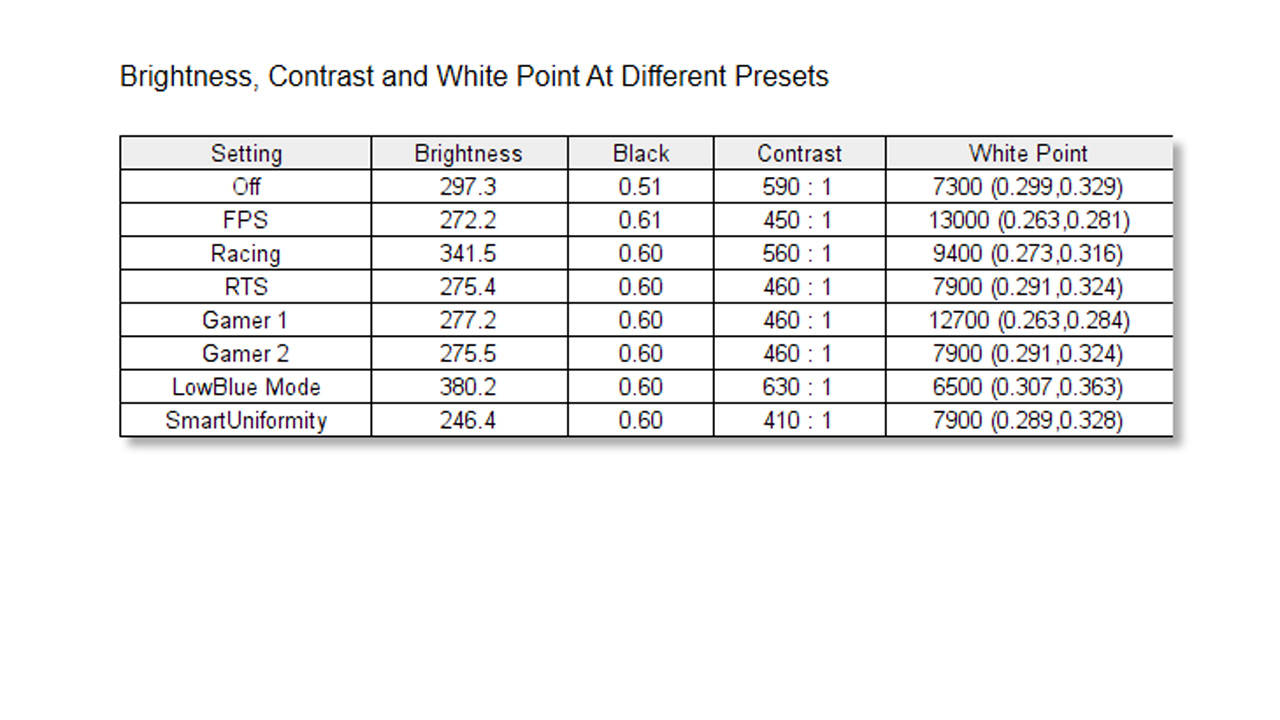
LowBlue Mode is actually the closest to our target with maximum brightness shown and the best contrast to boot. If I’m lazy, this is the preset I would choose for calibration.
Color Gamut
The Color Gamut test evaluates the color space coverage of the display panel from industry standards including sRGB, AdobeRGB and DCI-P3. Higher percentage is better.
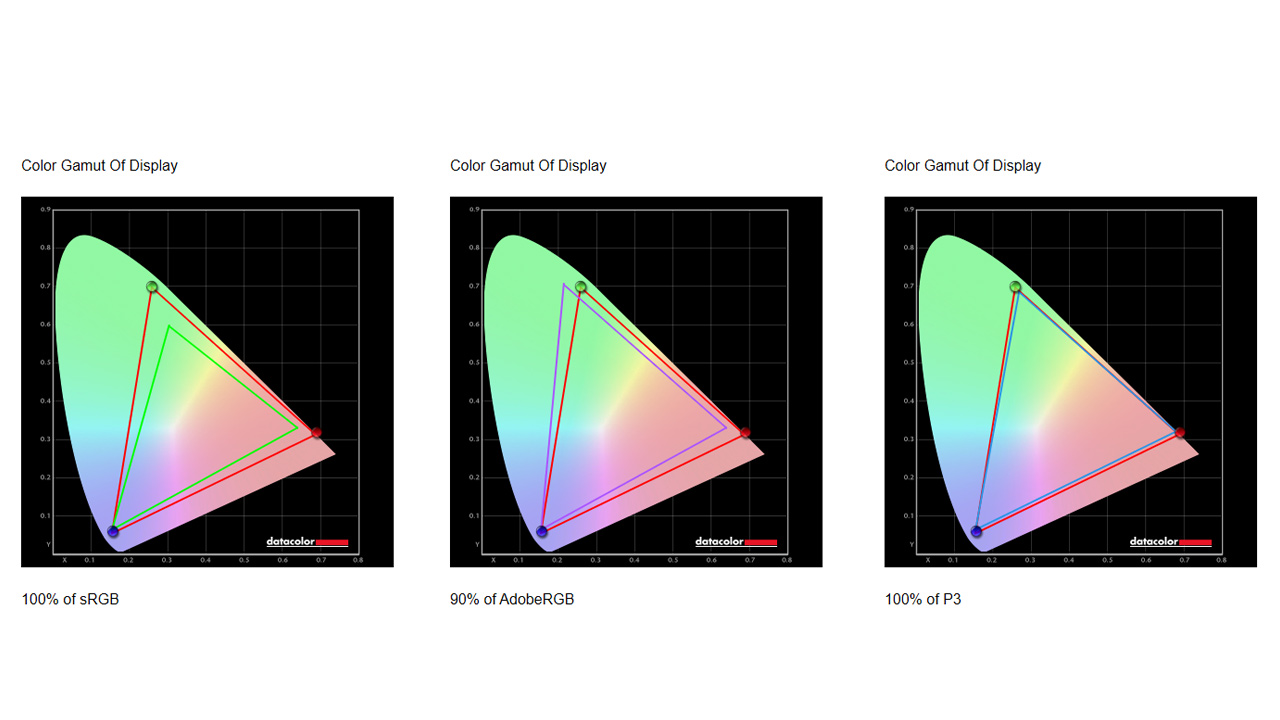
Color coverage is pretty awesome – top of the class even for consumer displays.
Tone Response
Tone response is where we check the display panel’s gamma and presets if there are any. We then compare the results with the industry standard gamma levels. Closer to the standard value is better.

Spot on is what I’d like to say when it comes to the gamma levels of the 275M1RZ. That’s from 1.8 up to 2.6 which is insanely accurate.
Brightness
The test here will shows us an overview on how the display performs at various brightness levels. This is measured in nits or candela per square meter (cd/m2). Higher is better.
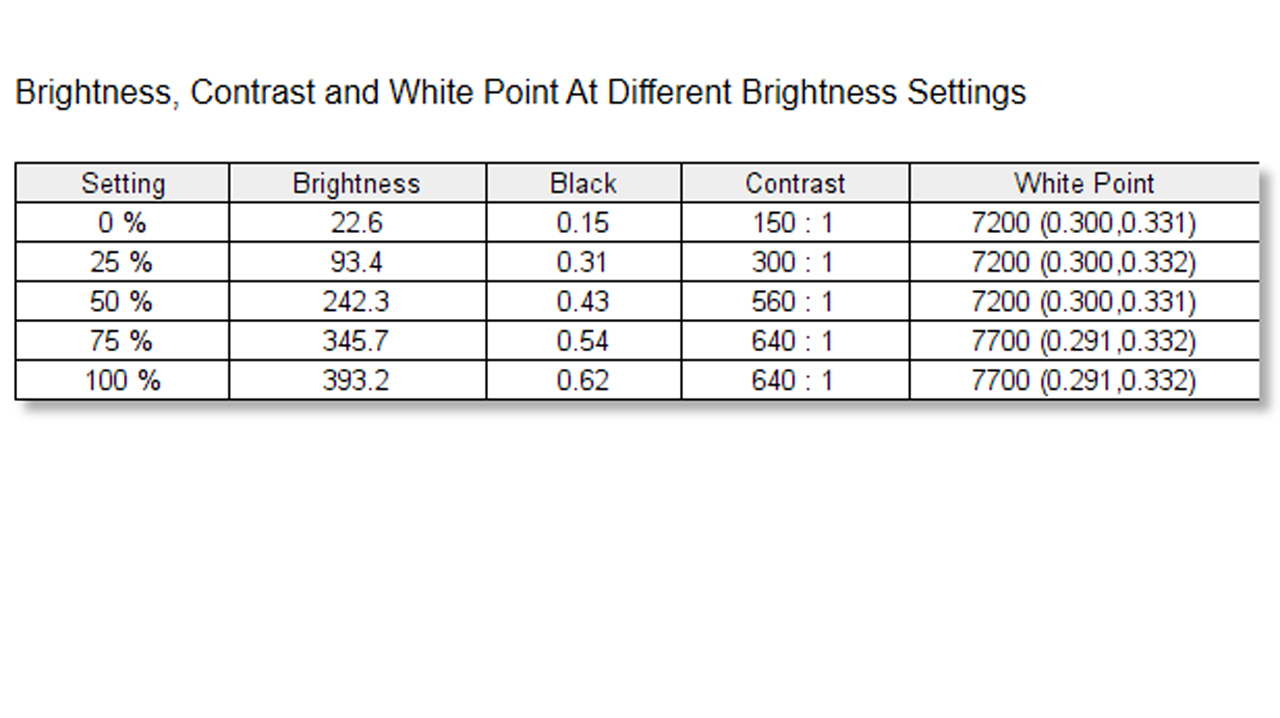
Peak brightness is rated at 393.2 cd/m2. That’s 43.2 cd/m2 higher compared to the peak from the specifications sheet, almost reaching the bare minimum for a properly implemented HDR400 certified displays. This monitor by the way is Windows HDR/WCG ready.
Contrast Ratio
Static contrast ratio is also tested. The test here will shows us how the display performs at varying contrast levels measured in luminance ratio. Higher is better.

Using the same results from the previous benchmark, we could see that the display could only max out at 640:1 contrast ratio. Certainly not the best in class when it comes to this area.
Screen Uniformity
This test shows us an overview of the display panel’s color and luminance uniformity. The closer this value to 0, the better.
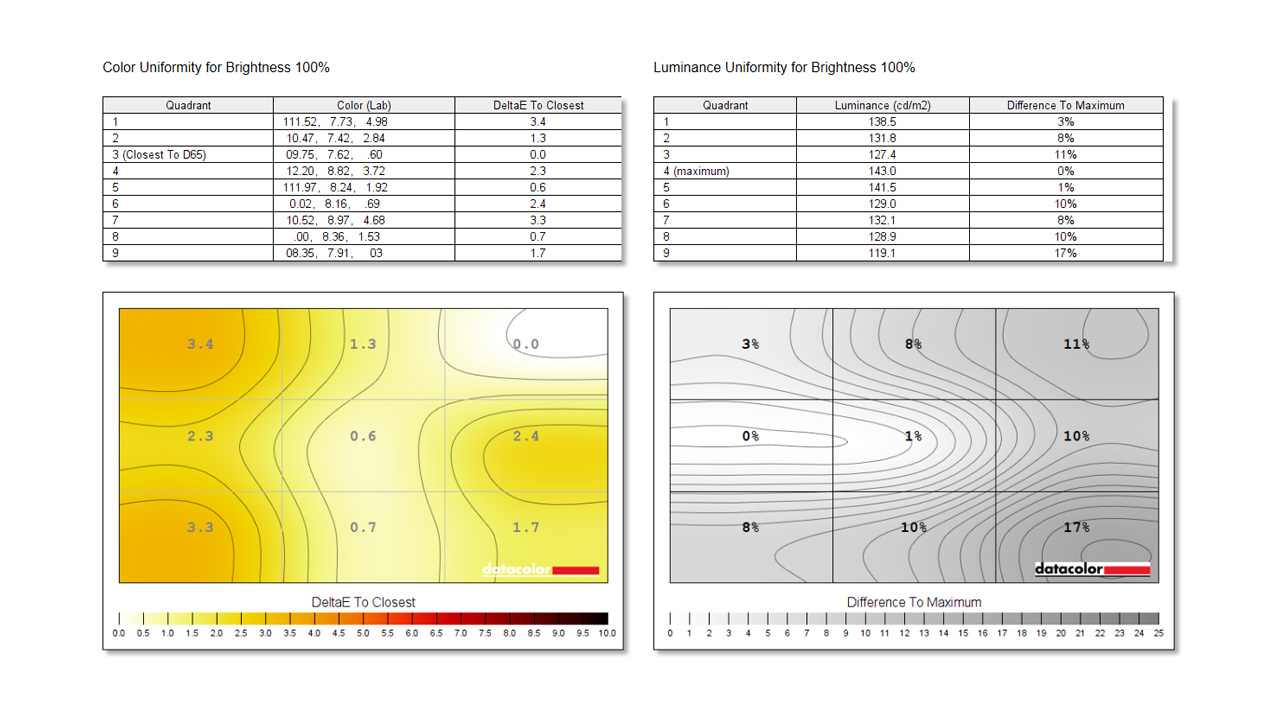
Color uniformity is pretty decent, with a Delta-E average of 1.74. The same thing doesn’t apply to luminance though, with a maximum deviation of 17% compared to the brightest area of the panel.
Color Accuracy
The color accuracy test shows how different basic color hues are reproduced by the display panel. These color tones corresponds with the Datacolor SpyderCheckr. Lower Delta-E values are better.
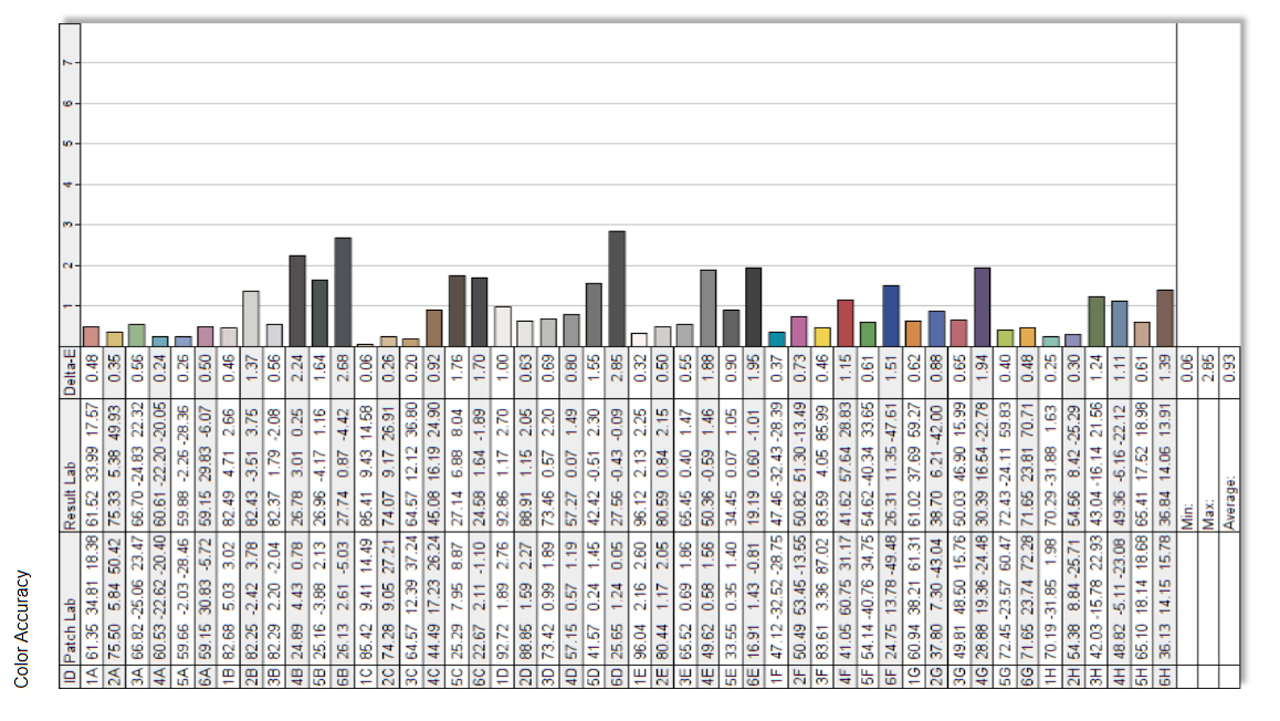
We got 0.93 Delta-E value for the color accuracy of the 275M1RZ. What attributes the most to this are the grey patch labs. Could be due to the not so good contrast ratio.
Power Consumption
The power consumption at varying brightness and contrast levels is checked with a power meter. The lower the power consumption, the better.
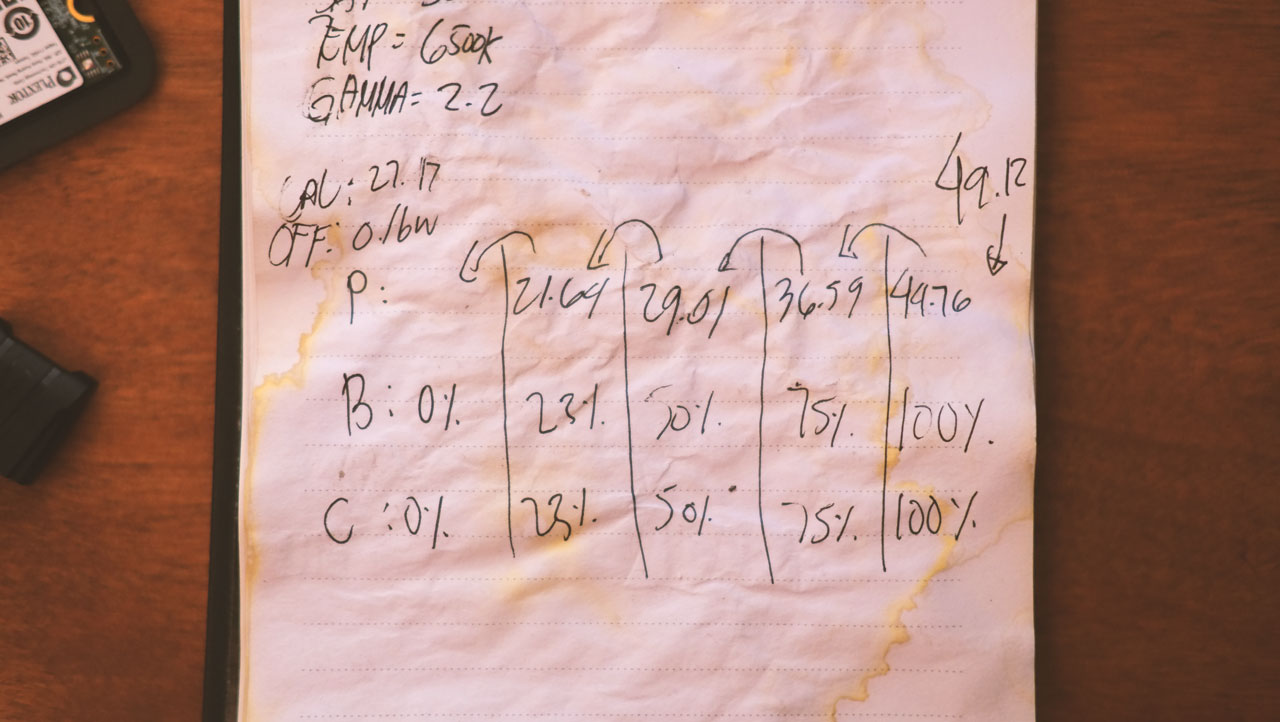
Power consumption is rated at ~49.12W at the monitor’s maximum brightness level. At our calibrated value, this goes down to 27.17W. Idle is about 0.16W. Tip: Do not put your notebook next to a piping hot mug of coffee.
Display Lag
Time Sleuth is a standalone video signal input lag testing device. It works by sending a video output to the display panel. A photodiode then converts the displayed signal to measure both the input lag and response time.
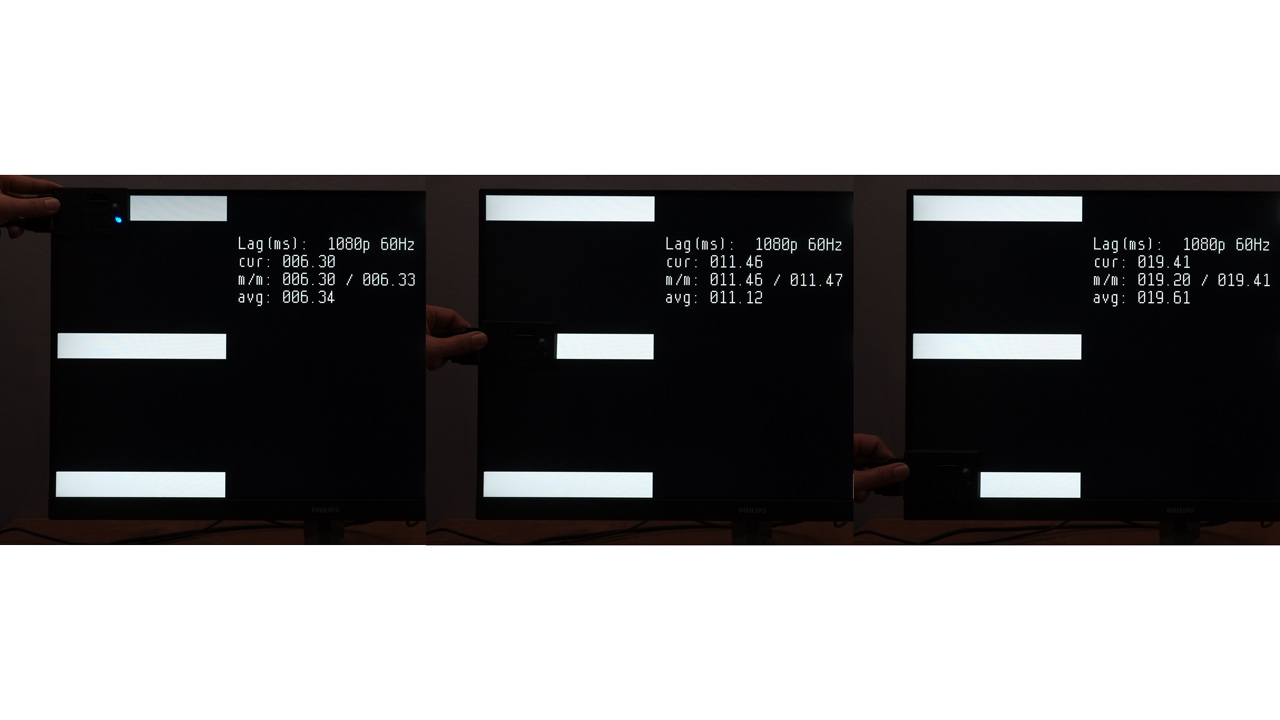
Average lag is measured at 6.34ms, 11.12ms and 19.61ms. Those are measurements from the top, middle and bottom part of the panel respectively. Using MPRT or disabling Smart Response does nothing in this regard but disabling Low Input Lag from the OSD adds about ~20ms of lag which is insane. Definitely keep that option enabled.
Motion Clarity: Pursuit Camera
Setting up a pursuit camera courtesy of Blur Busters allows us to a great extent, perceive the actual motion clarity of the display. Using such method also allows us to check out motion artifacts including ghosting, inverse ghosting and blurring. This pursuit camera test is a peer-reviewed invention.
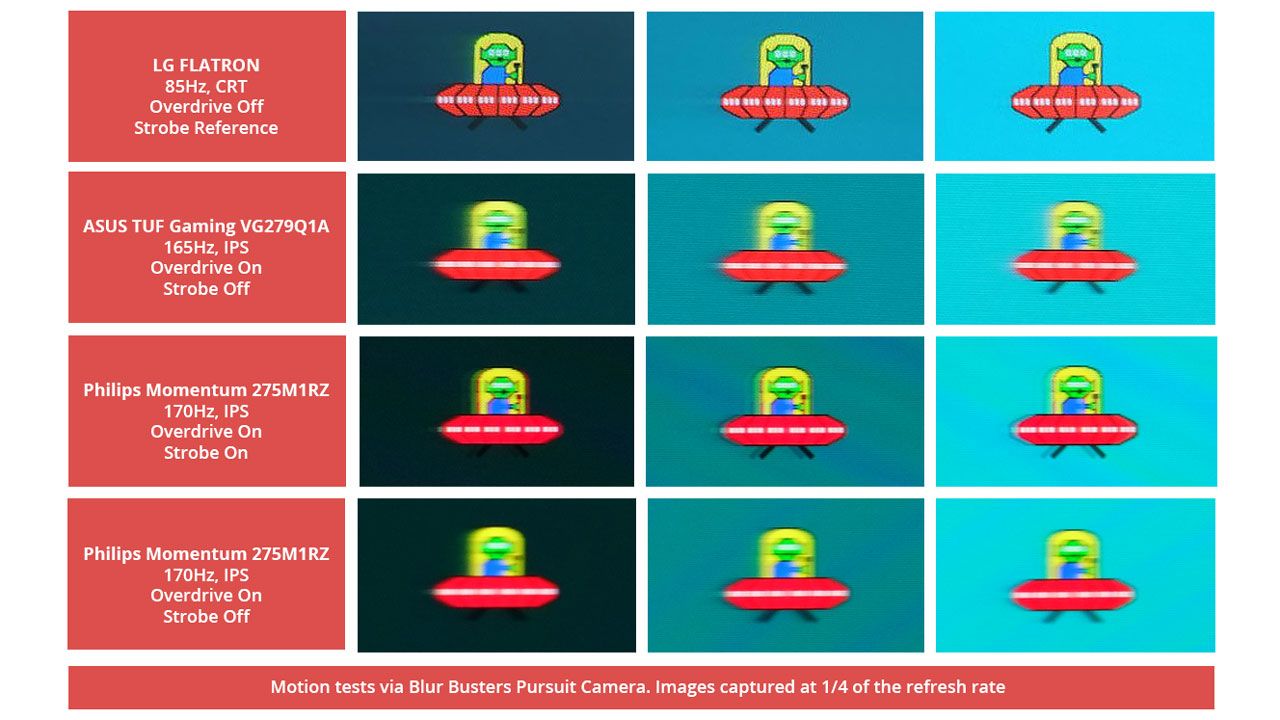
Motion clarity is decent for a 170Hz display but if you want to maximize clarity, you really have to enable MPRT mode. This of course requires stable frame rate and will lower brightness when enabled. Lucky enough, setting the MPRT to even the lowest settings (goes from 1-10 with varying brightness levels) will net you favorable results. The captured images above are at level 5.
Back light Bleed
Back light Bleed is the phenomenon where back lighting from a display leaks. This is prevalent with displays where LEDs used to light the panel are situated at the edges of the display. Testing the back light of the display is conducted on a dim room, simulating the recognizable amount of bleed for such scenario.
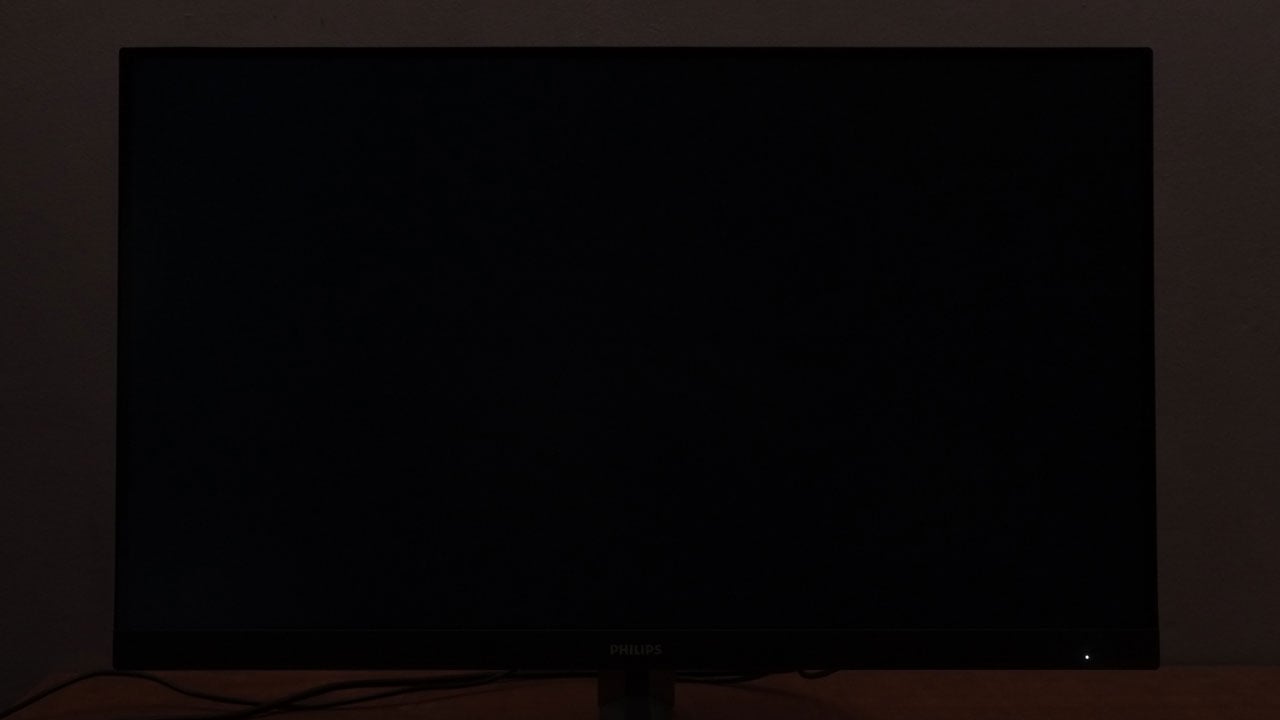
Back-light bleed is definitely unnoticeable here. Pretty good stuff.
Viewing Angles
Viewing angles are also tested to check out how the display panel performs at different positions or eye levels. This should be helpful if you are looking for a panel that could be used on multi-monitor setups.
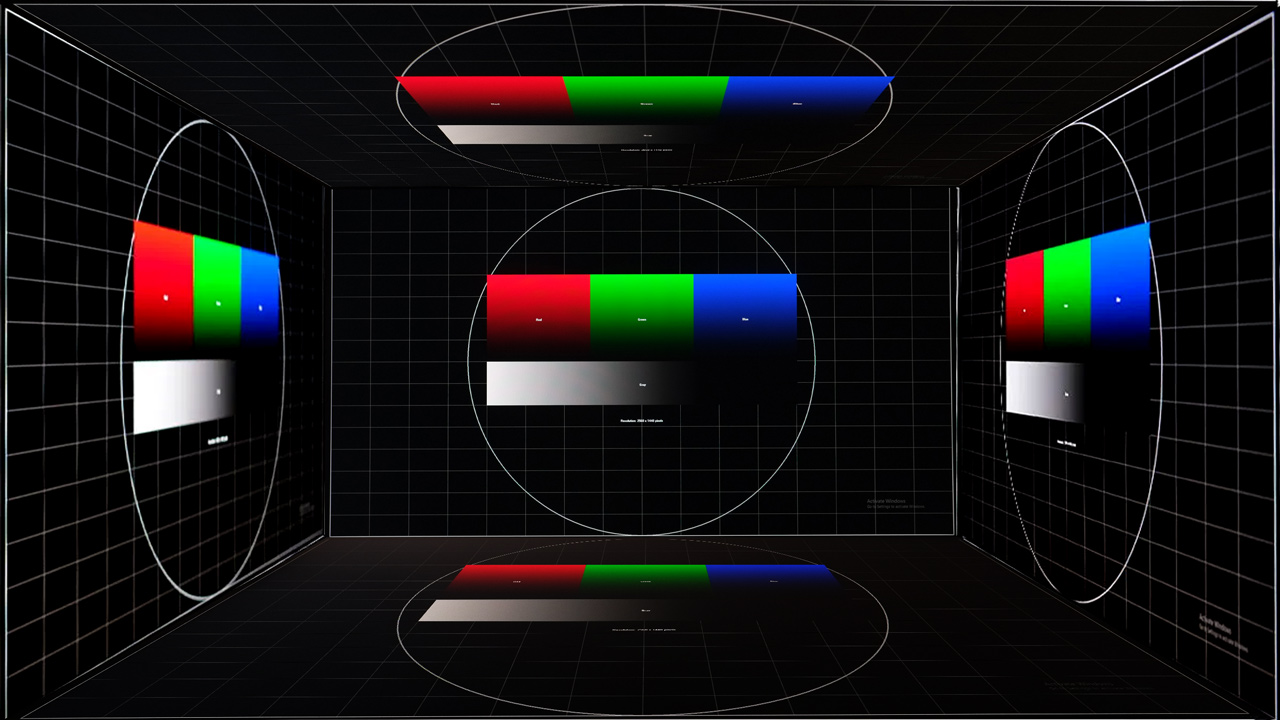
Viewing angles are excellent. Nothing to complain around this area. Note that the glow you see from the lower angle is from the ceiling light reflecting to the display panel.
Frame Skipping
Frame Skipping is the phenomenon where dropped frames and missing refreshes occur due to ineffective refresh rate overclocking. We are are utilizing the Blur Busters Frame Skipping Checker to test if there is any. If your display exhibits such issues, it should be perceptually similar to in-game frame skipping.
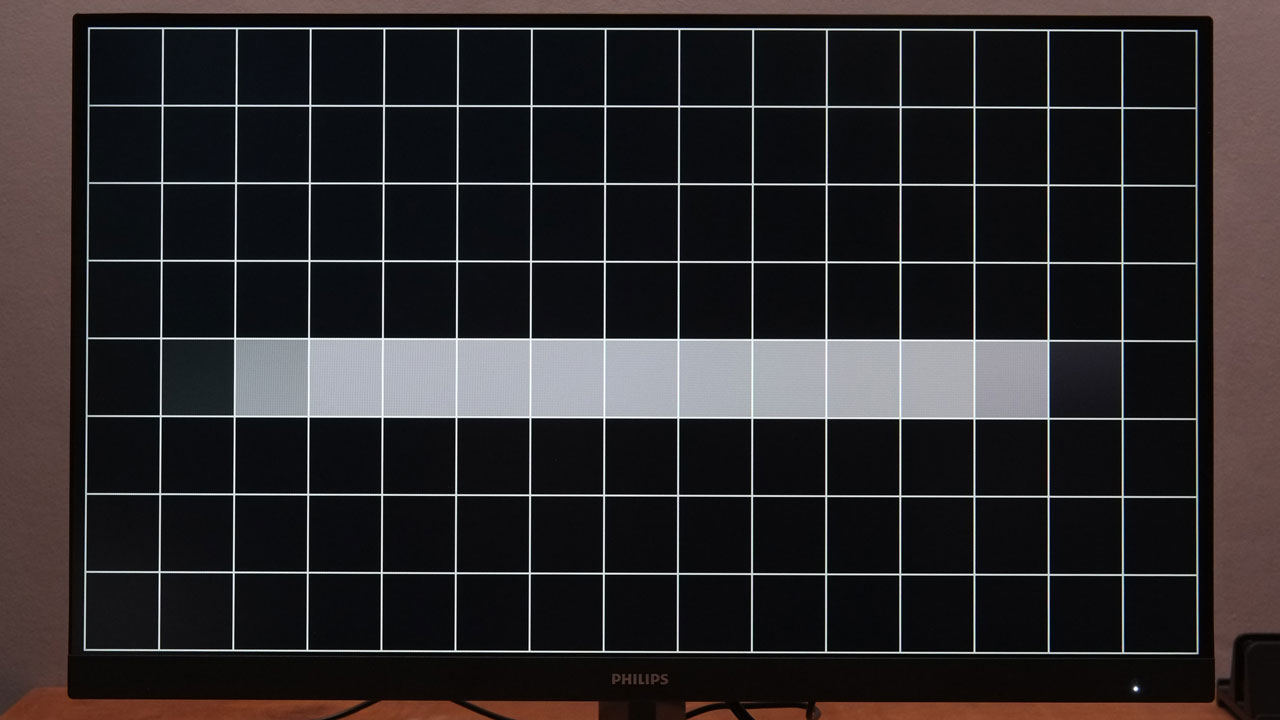
Frame skipping is also not an issue with this display. Certainly run this monitor at 170Hz out of the box.
Software, Lighting and Special Features
Ambiglow is perhaps one of the main selling points of this display and it shows. It works by using rear facing surrounding LEDs to match the color of the image on the screen. Depending one the proximity of the lighting effect to the wall and its intensity, it could make up for a really immersive viewing experience. My only complain about it is the response time. The lag is noticeable but it is definitely a must see to experience.
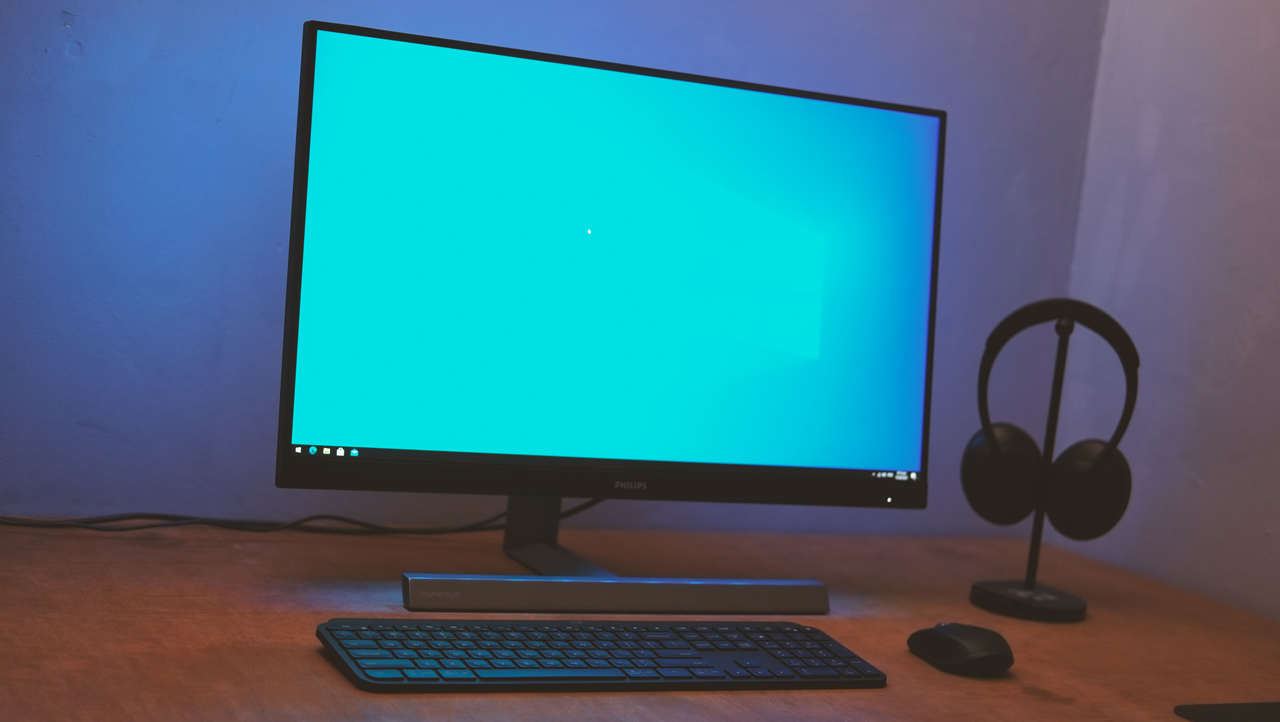
Not often discussed on reviews are the integrated speakers of gaming monitors. I’d like to do justice for the Momentum 275M1RZ since they are one of the best in this price point with the DTS certified 5W RMS stereo speakers. This one easily beats the ASUS VP249QGR’s (was my favorite) in terms of SPL and clarity – with DTS presets to boot. Beware though that distortion could creep in at elevated listening levels but other than that issue, the rear firing speaker works like wonder. I just wish Philips could implement a better rear facing design though. Maybe a proper left and right speakers next time for better channel separation and imaging.
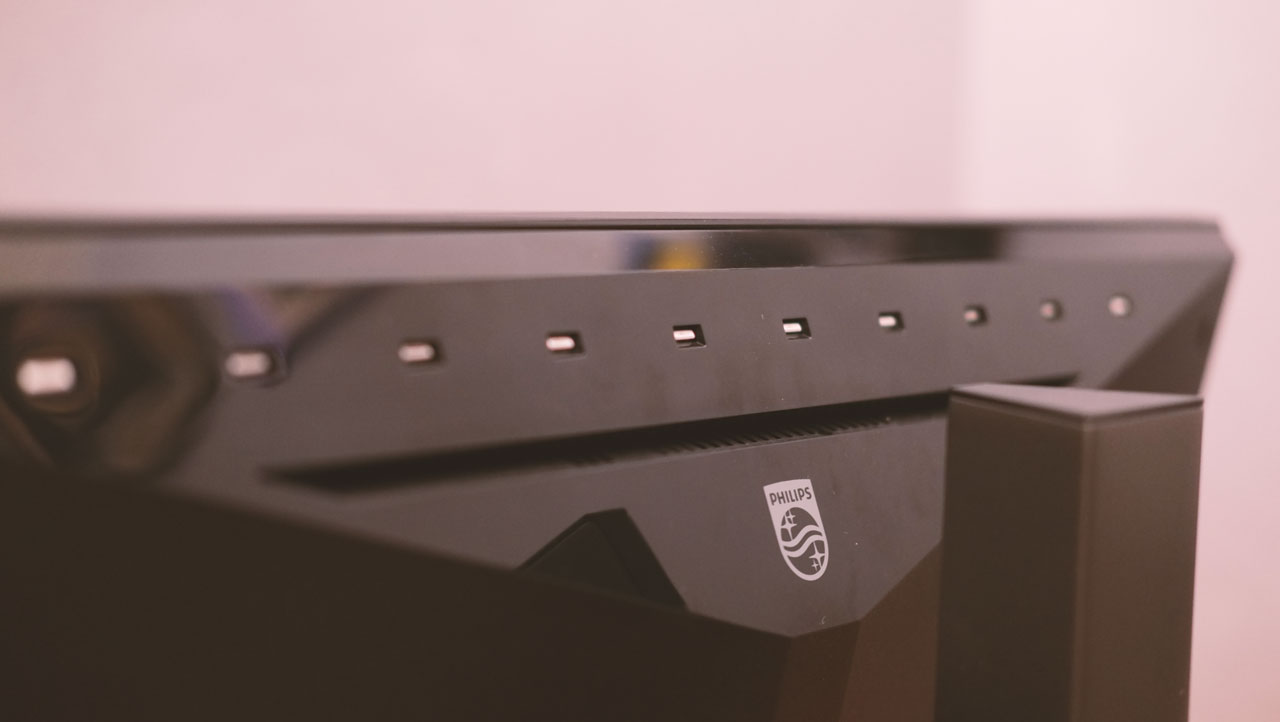
Apart from these features, the monitor comes with 4x USB 3.0 passthrough ports. A single USB Type-B to Type-A connects them to the PC. I did not test its speed nor compliance with high polling rate devices though.
Finally, the monitor also fully supports adaptive sync via AMD FreeSync. It’s the premium one so it has better adaptive sync range over the norm.
Final Thoughts
Philips left me an impression with the 272E1GSJ that they need an ample amount of time to set their gaming noggins straight. Sadly still, they did not with the naming scheme, but I’d be lying if I said they did no justice with the performance and feature set of the Momentum 275M1RZ.
This is finally an exceptional contender at 25K PHP featuring a 1440P resolution, 170Hz refresh, and an IPS panel coupled with excellent build, top notch color coverage, gamma and brightness levels. Add the Ambiglow to that, along with a capable integrated stereo solution and we now have the 275M1RZ as a true price bracket defining gaming monitor.
Simply put, if you like to play with style without sacrificing anything other than enhancing your eyebags due to extended game time, then I highly recommend the Philips Momentum 275M1RZ. This gaming monitor is just hard to beat at around 25,000 Pesos.
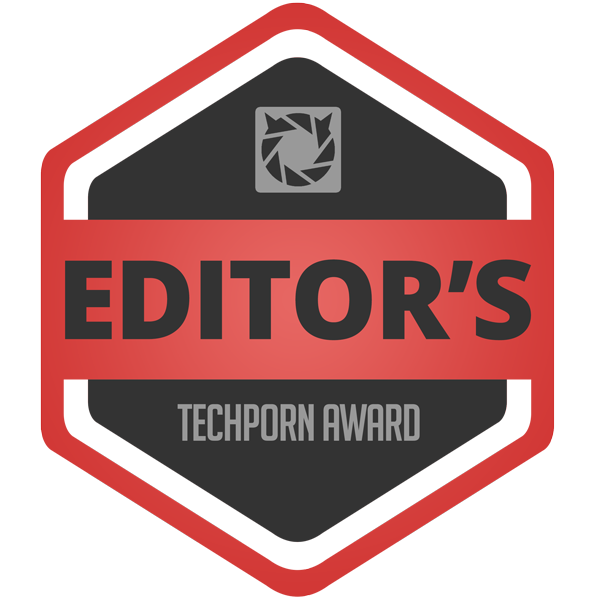
Philips Momentum 275M1RZ
-
Performance - 8/10
8/10
-
Build Quality - 9/10
9/10
-
Connectivity - 9/10
9/10
-
Ergonomics - 9/10
9/10
-
Features - 9/10
9/10
Summary
The Philips Momentum 275M1RZ is an excellent gaming monitor hiding behind an elegant façade. With its performance and features in tow, it is hard to beat at its designated price point.
Pros
- Excellent brightness levels
- Excellent color coverage
- Class leading 5W stereo speakers
- Ambiglow is more than just a pretty lighting effect
- On point gamma presets
- Great connectivity options
- Actually punches above its price point
Cons
- Contrast ratio could be better
- Speaker distortion at elevated SPL
- Ambiglow response time – literally nitpicking here

